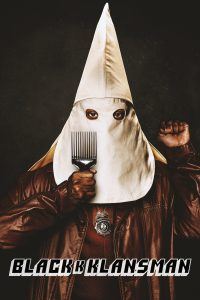Michael Wood in the London Review of Books:
 Spike Lee, as befits a film school graduate, is a master of montage. His cuts and juxtapositions often say more than his dialogue does, perhaps more than any dialogue could. This is especially marked in BlacKkKlansman, which has been widely hailed as Lee’s return to form after a spell in the movie wilderness.
Spike Lee, as befits a film school graduate, is a master of montage. His cuts and juxtapositions often say more than his dialogue does, perhaps more than any dialogue could. This is especially marked in BlacKkKlansman, which has been widely hailed as Lee’s return to form after a spell in the movie wilderness.
The film opens with a shot of a railway yard littered with bodies, wounded, dead and dying. A woman crosses the screen from right to left, and the camera pulls back higher and higher, until the whole screen looks like a tapestry made of those many bodies. A Confederate flag flutters at the left of the image. After the opening shot the film shifts away from colour, and we see Alec Baldwin practising a lecture with film clips. He keeps fluffing his lines, but the racism is clear enough: Jews and Negroes are taking over the world, and the natural supremacy of whites is scorned everywhere. Then we move back into colour and see some lofty shots of the Rocky Mountains: pure scenery, it seems, until we close in on a sign at the entrance to a town – Colorado Springs, a place that is about to hire its first black police officer.
The pictured times move from the 19th century to the 1950s to the 1970s. We may not have recognised the first shot as coming from Gone with the Wind, but we’ll certainly have picked up the presentation of the American South and the Civil War. As for the connections among the three scenes, we’re still waiting for the film to start and can’t really work on them. They are already working on us, though, and tangled bits of history and mythology hang in the air: spectacular but romantic defeat, self-congratulating hatred, the West, integration, much more.
More here.
